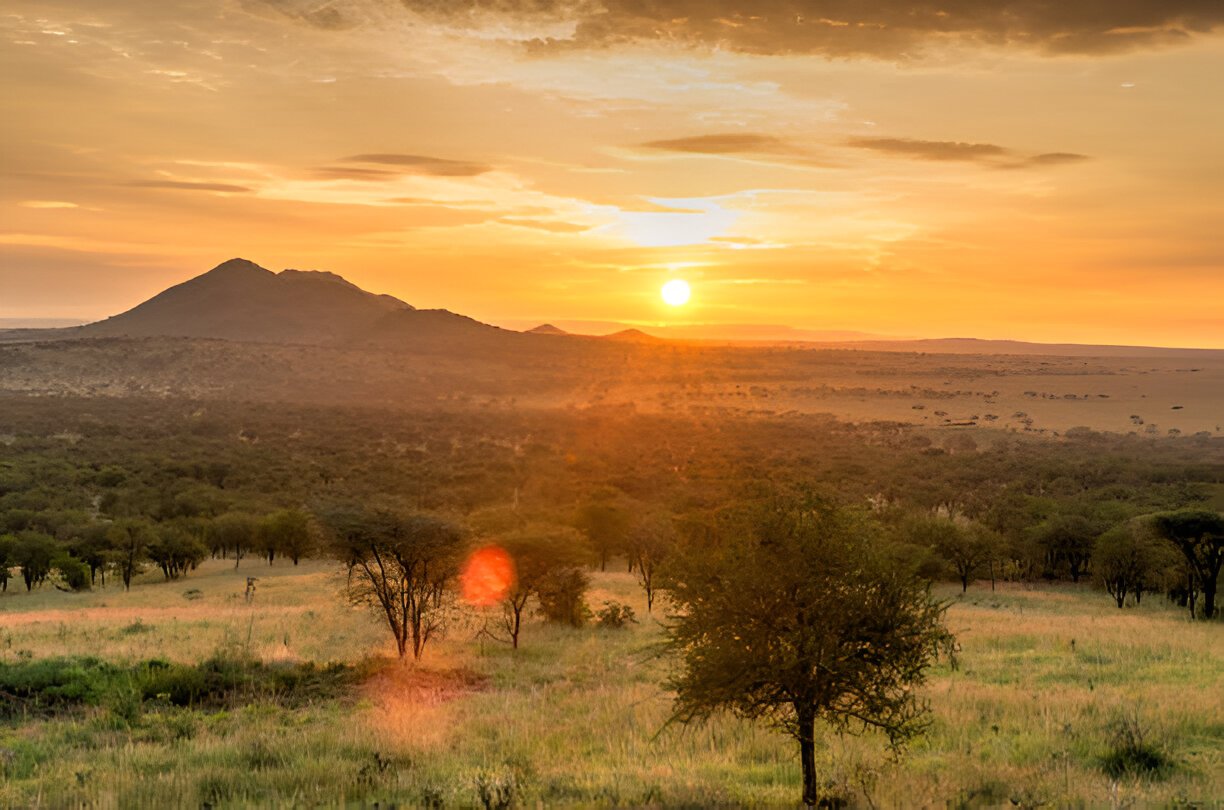Table of Contents
Introduction
Tanzania is one of Africa’s top destinations for wildlife safaris, cultural immersion, and beach retreats. This East African country offers diverse habitats, from vast grasslands and volcanic highlands to tropical coastlines. Tanzania is especially famous for the Big Five—lion, leopard, elephant, buffalo, and rhino—and for spectacular scenery. Whether you are traveling as a couple on your honeymoon, a family with children, or a group of friends seeking adventure, Tanzania caters to many different tastes and preferences.
Here is the list top 7 destinations thatm you should visit in Tanzania to make you trip truly unforgetable!
1. Serengeti National Park
Serengeti National Park is arguably Tanzania’s most iconic safari destination. Recognized as a UNESCO World Heritage Site, it is well known for its sweeping endless plains, abundant wildlife, and the Great Migration—one of the world’s most impressive wildlife spectacles. Along with the breathtaking savannah vistas, the Serengeti offers a variety of lodging options, from simple campsites to upscale lodges.
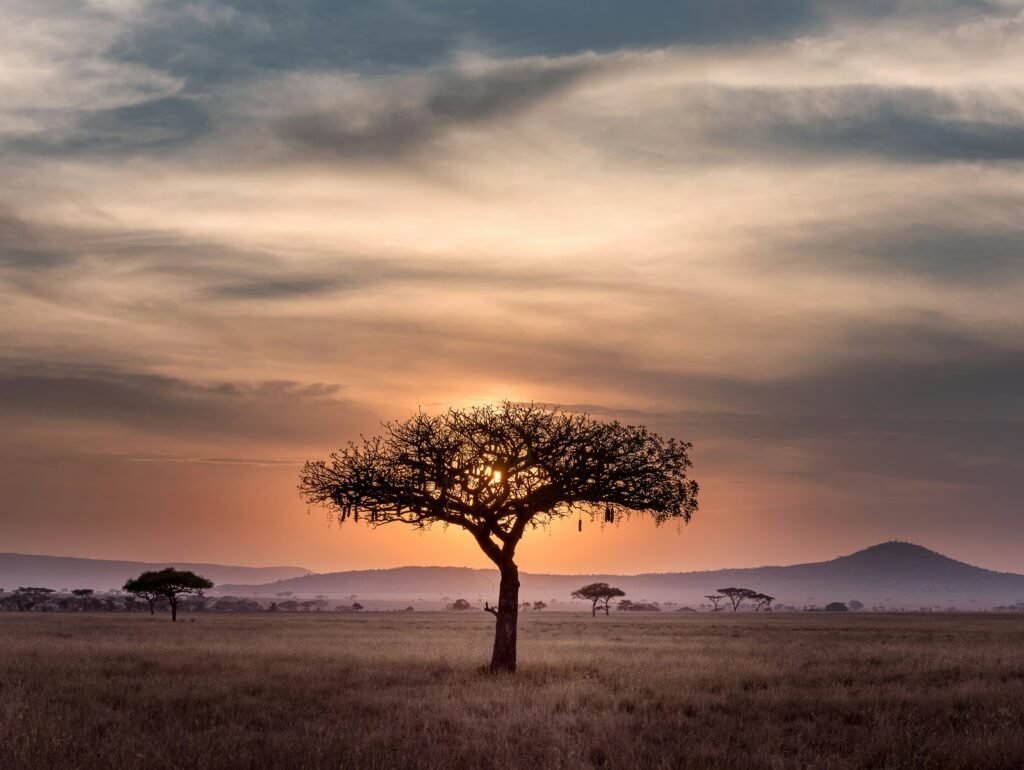
The Great Migration
One of the major highlights of Serengeti National Park is the Great Migration. Every year, millions of wildebeests, zebras, and gazelles travel across the Serengeti in search of fresh grazing areas. This cyclical event is heavily dependent on rainfall and occurs in different parts of the park at different times of the year.
- Prime Viewing Months:
The months of June through October are particularly good for seeing the herds as they move northward. Calving season usually occurs in the Southern Serengeti around January and February, when newborns appear and attract more predators, making for dramatic game-viewing moments. - Hot-Air Balloon Safaris:
A hot-air balloon ride provides a panoramic view of the plains. Floating above vast herds of wildebeests and zebras allows for a unique perspective on their movements across the golden savannahs. This activity often ends with a special bush breakfast right in the park.
Tailored Experiences for Families and Couples
Serengeti is not just about game viewing; it also provides specialized experiences for different types of travelers.
- Family Safaris:
Many lodges offer child-friendly activities like guided nature walks around the camp, wildlife education sessions, and shorter game drives that cater to children’s attention spans. Guides often explain animal behavior in simple, engaging ways. - Couples and Honeymooners:
For a romantic getaway, private game drives and intimate dinners under the stars can be arranged. Many luxury safari lodges feature secluded suites or tents with private decks and plunge pools, allowing guests to enjoy the serenity of the Serengeti in comfort and privacy.
Luxury Safari Lodges
Luxury accommodations in the Serengeti often include all-inclusive packages with gourmet dining, spa treatments, and personalized service. These lodges or tented camps typically blend into the natural environment with minimal environmental impact. Some are designed with canvas walls, providing an authentic “close to nature” feeling without sacrificing modern amenities like hot showers and comfortable beds.
2. Ngorongoro Crater
A short drive from the Serengeti, the Ngorongoro Crater is a UNESCO World Heritage Site often described as a “natural enclosure.” Formed by the collapse of a large volcano millions of years ago, the crater is now home to a dense population of wildlife. Its steep walls and high rim create a unique ecosystem that supports an impressive variety of animals.
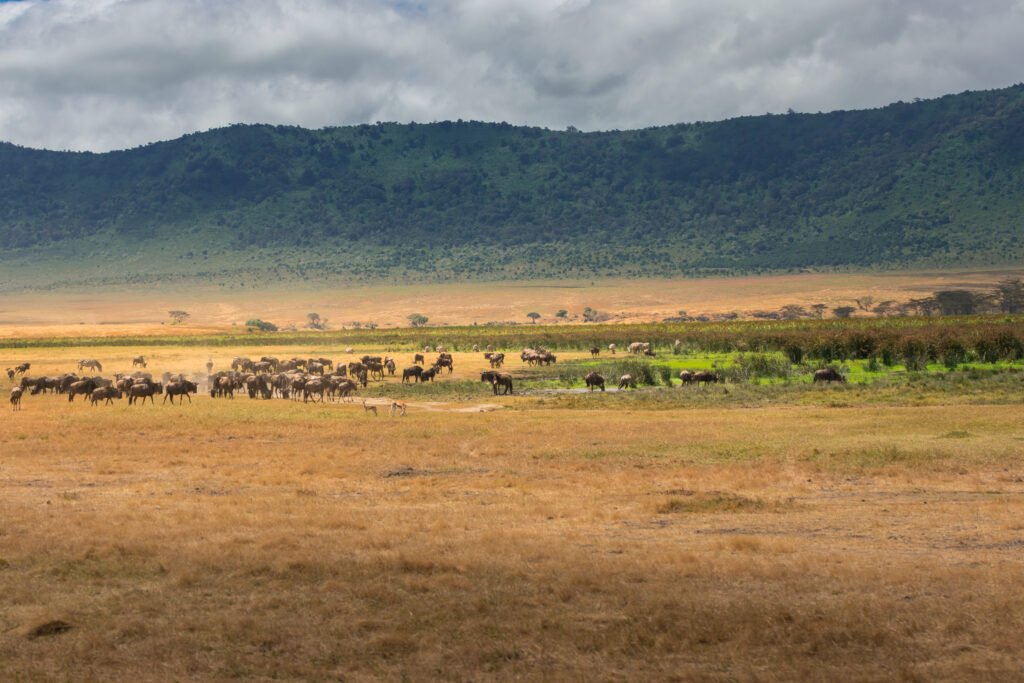
Unique Wildlife Encounters
With rich grazing areas and permanent water sources, the crater floor is teeming with animals all year long. Ngorongoro Crater is one of the few places where you have a higher chance of spotting the endangered black rhino.
- Density of Animals:
Lions, hyenas, wildebeests, zebras, buffalo, hippos, and even cheetahs can be spotted here. Because the wildlife is concentrated in a relatively small area, you can see a substantial number of species in a shorter time. - Half-Day or Full-Day Game Drives:
Many visitors choose half-day excursions, but a full-day game drive offers the chance to see early morning predator activity as well as late afternoon wildlife behavior. Guides often bring along a picnic lunch so you can maximize your time within the crater.
Maasai Cultural Experiences
The Ngorongoro region is also inhabited by the Maasai, a semi-nomadic tribe known for distinctive clothing, customs, and cattle-herding practices.
- Visiting Maasai Bomas:
Many tours include a stop at a Maasai homestead, or “boma.” Visitors can learn about Maasai traditions, daily activities, and the central role cattle play in their society.
Conservation Initiatives
Park fees and tourism revenue support conservation programs in Ngorongoro. These initiatives focus on anti-poaching measures and the well-being of local communities. By visiting the crater, you contribute to protecting its wildlife and preserving the cultural heritage of its inhabitants.
3. Tarangire National Park
Tarangire National Park is often overshadowed by the Serengeti and Ngorongoro, yet it offers a more secluded but equally fulfilling safari experience. The park is named after the Tarangire River, a key water source that attracts large numbers of animals during the dry season.
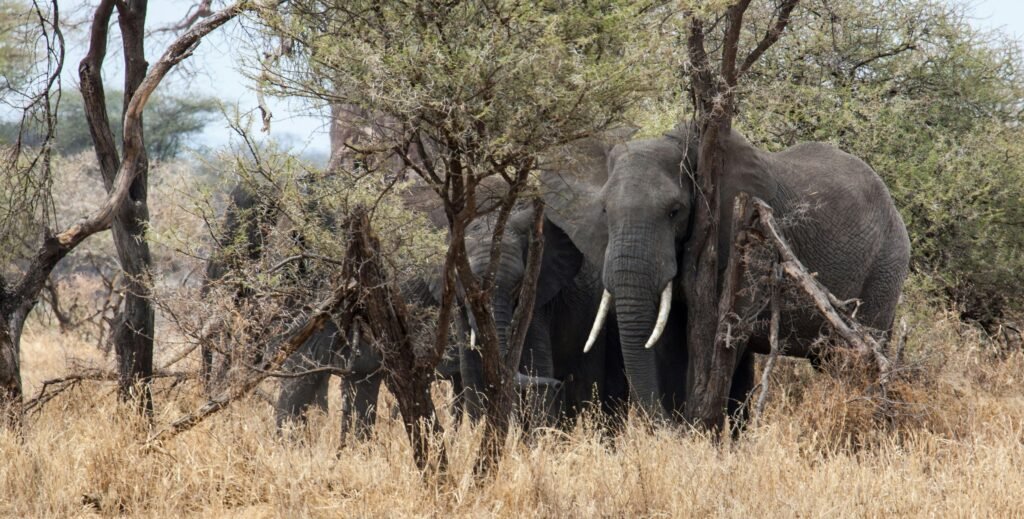
Elephant Paradise
Tarangire is famous for its large elephant population. Herds frequently gather around the river, socializing, playing, and mud-bathing. Observing elephant behavior is especially fascinating, particularly how older elephants protect their young.
- Dry Season Concentrations:
During the peak of the dry season, typically July to October, animals from neighboring areas converge on the Tarangire River. This allows for more reliable wildlife sightings. - Ideal for Photography:
The mix of giant baobab trees and large elephant families creates striking photo opportunities, making Tarangire a favorite among photography enthusiasts.
Birdwatcher’s Haven
With more than 550 bird species, Tarangire stands out as a premier birdwatching destination in East Africa.
- Seasonal Wetlands:
When the rains arrive, migratory birds—such as flamingos and storks—flock to wetlands in the park. Even outside the rainy season, Tarangire’s diverse habitats attract a wide array of avian life, providing plenty of spotting opportunities for avid birders.
Night Game Drives and Walking Safaris
Some lodges and camps in Tarangire offer night game drives, an experience not widely available in many other national parks. This allows you to observe nocturnal animals like bush babies, porcupines, and leopards in their natural habitat.
- Walking Safaris:
Guided by armed rangers for safety, walking safaris offer a unique way to explore the bush. Guides point out tracks, insects, and smaller details that are easily missed during vehicle-based game drives, creating a deeper connection with the environment.
4. Lake Manyara National Park
Although smaller than many other Tanzanian parks, Lake Manyara National Park holds its own as a unique destination. Set between the Rift Valley escarpment and the shallow, alkaline Lake Manyara, the park’s landscape includes groundwater forests, open plains, and the lake itself, which supports a diverse range of wildlife.
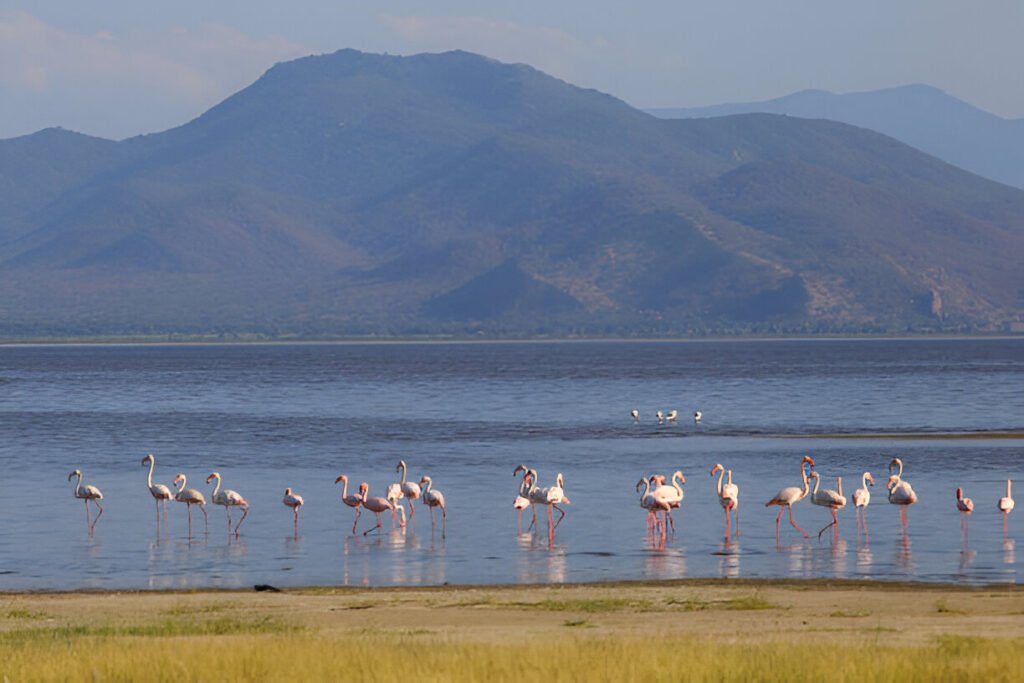
Tree-Climbing Lions
One of Lake Manyara’s distinctive features is its tree-climbing lions. While lions occasionally climb trees in other parts of Africa, the lions here are more commonly seen lounging on branches.
- Behavioral Reasons:
Various theories suggest they climb to avoid insects or to stay cool during the daytime heat. Whatever the reason, seeing lions perched in trees is an unforgettable sight. - Photography Tip:
Midday is often the best time to see them resting on branches, as they seek a higher vantage point and a breeze.
Family-Friendly Canopy Walk
Lake Manyara offers a 370-meter-long treetop walkway, providing a bird’s-eye view of the forest canopy. This boardwalk is considered safe for families, and children can enjoy observing wildlife from above.
- Bird’s-Eye View:
Monkeys and various bird species are frequently seen at eye level along the walkway, giving visitors a fresh perspective on forest life.
Bird Lover’s Paradise
Thousands of flamingos and other bird species converge on Lake Manyara, painting its surface in vibrant pink hues during certain times of the year. Birders and casual observers alike can appreciate the scenic display.
- Seasonal Spectacle:
The presence of so many flamingos can vary depending on water levels and algae conditions, but when they gather, the scene is reminiscent of a giant watercolor painting.
5. Ruaha National Park
For those seeking an off-the-beaten-path safari, Ruaha National Park is an excellent choice. It is Tanzania’s largest national park, known for its rugged landscapes, baobab-dotted plains, and significant predator populations. Because fewer tourists visit this remote region, Ruaha maintains a more untouched, wilderness feel.
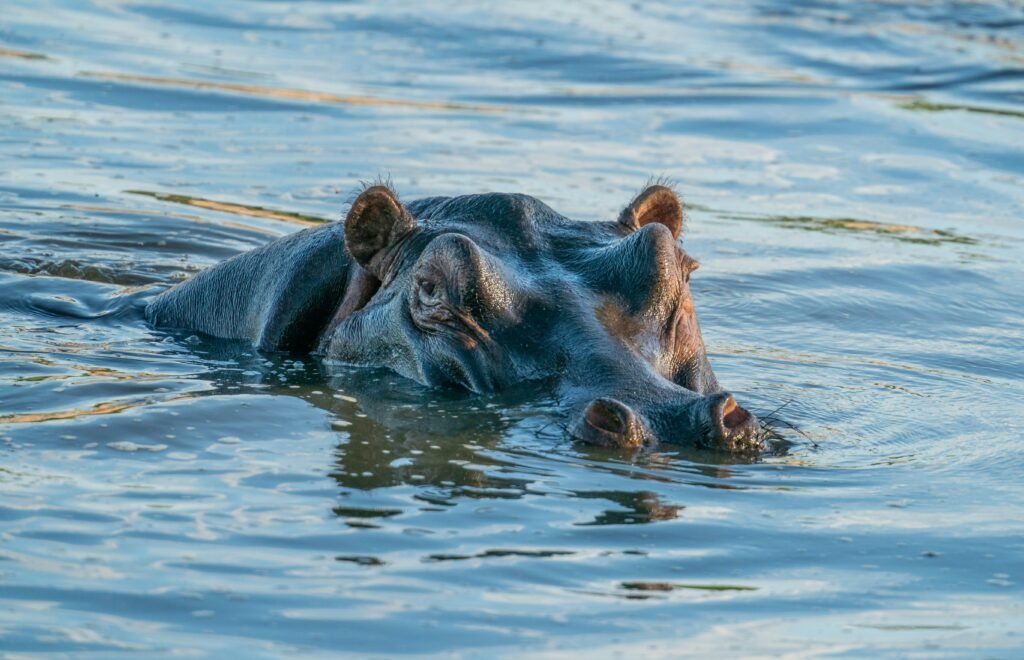
Off-the-Beaten-Path Adventures
Ruaha offers a sense of solitude unmatched in many of the more popular northern parks. You can drive for hours without encountering other safari vehicles, enhancing the feeling of exclusivity.
- Spotting Rare Species:
Ruaha is a reliable place to see endangered African wild dogs. Additionally, roan and sable antelopes inhabit the park’s expansive grasslands. - Personalized Experience:
With fewer vehicles around, guides can customize game drives based on your preferences. Whether you want to focus on tracking lions or observing birds, Ruaha’s quieter environment makes targeted viewing more feasible.
Luxurious Yet Sustainable Camps
Ruaha’s lodges and tented camps emphasize eco-friendly practices, like the use of solar power and minimal plastic waste, to preserve the park’s natural beauty.
- Solar-Powered Facilities:
Hot water and lighting in many camps rely on solar energy, reducing each property’s carbon footprint and impact on the local environment.
Cultural Encounter with Hehe and Barabaig Communities
The region around Ruaha National Park is home to various tribes, including the Hehe and Barabaig. Some safari packages incorporate cultural visits, where you can learn about daily life, traditions, and crafts.
- Cultural Dance Performances:
Guests may be invited to watch or participate in traditional dance ceremonies, which often involve drumming and singing. - Storytelling:
Elders from the community sometimes share oral histories, offering insight into Tanzanian heritage and the relationship between local people and the land.
6. Zanzibar
Many travelers end their Tanzanian adventure with a relaxing trip to the Zanzibar Archipelago. This tropical paradise contrasts sharply with the mainland’s savannahs, featuring white-sand beaches, turquoise waters, and a rich Swahili culture influenced by centuries of trade.Stone Town’s Cultural Heritage
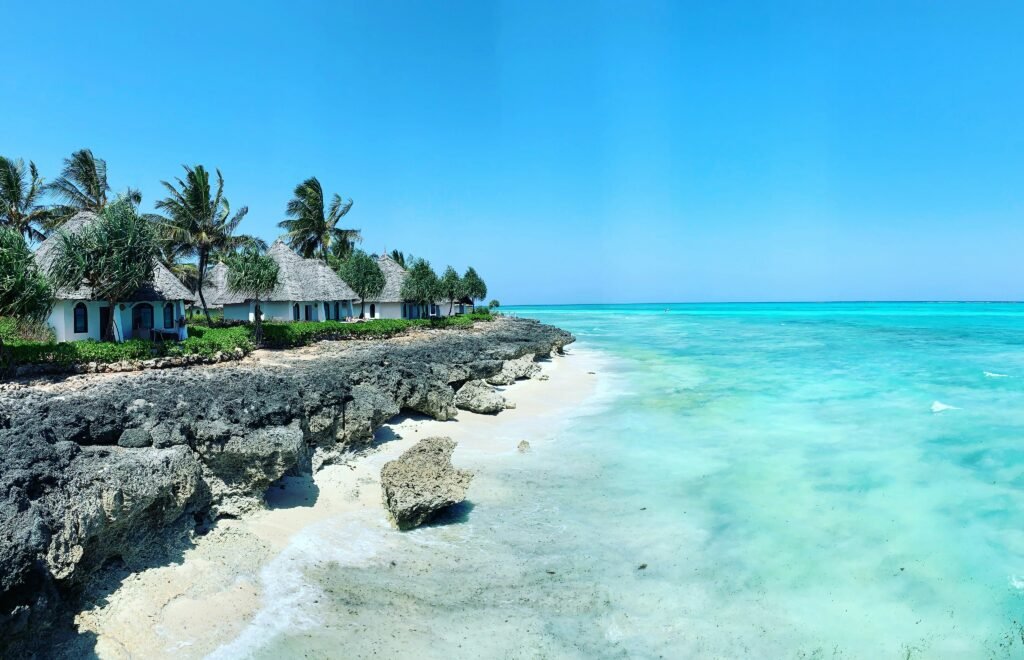
Stone Town is Zanzibar’s historical center. Its narrow streets, old Arabian-style homes, and bustling local markets highlight a blend of Arab, Persian, Indian, and European influences. This cultural fusion led to Stone Town’s designation as a UNESCO World Heritage Site.
- Spice Markets:
Zanzibar has been known as the “Spice Island” for its production of cloves, cinnamon, and other spices. Tours often include a visit to a spice farm to learn how these aromatic plants are grown and harvested. - Romantic Setting for Couples:
Couples can enjoy sunset walks along the waterfront, sample local seafood cuisine, and explore Stone Town’s historical sites, creating a mix of cultural immersion and relaxation.
Beach Bliss and Water Sports
Zanzibar’s beaches cater to various preferences, from lively resort areas to quieter, more secluded spots. Nungwi and Kendwa in the north are known for scenic sunsets and a vibrant atmosphere, while the southeast coast around Paje attracts kite surfers.
- Snorkeling and Diving:
Some of the best coral reefs in East Africa are found off Zanzibar’s coast, offering opportunities to see colorful fish, turtles, and sometimes dolphins.
Luxurious Island Resorts
Zanzibar features a wide range of high-end hotels and resorts, many of which offer over-water bungalows, private plunge pools, and exclusive dining. Whether you prefer a boutique hotel in historic Stone Town or a secluded villa by the ocean, the island’s hospitality industry is well-suited for luxury travelers.
Practical Tips for Planning Your Tanzanian Safari
Best Time to Visit
Deciding when to visit Tanzania depends on your personal interests:
- June to October (Dry Season):
Animals gather around water sources, and the reduced vegetation makes it easier to spot wildlife. The weather is sunny and dry, which is ideal for game drives. However, the parks are generally busier during this peak season, and prices can be higher. - November to March (Green Season):
Rains begin in November, and the landscape becomes lush and green. This period is excellent for birdwatching and often has fewer tourists. You may find lower rates, but be prepared for occasional rain.
Packing Essentials
A well-planned packing list can enhance your safari experience:
- Clothing:
Neutral-colored clothing helps you blend into the environment. Layering is useful for fluctuating temperatures during early morning and late afternoon game drives. - Insect Repellent:
Since malaria is present in parts of Tanzania, insect repellent is essential. Consult a doctor about prophylactic medication before your trip. - Binoculars and Cameras:
Binoculars help you spot distant animals, and a reliable camera ensures you capture memorable moments. - Personal Items:
Sunscreen, a hat, and sunglasses protect you from the strong sun. Bringing a small first-aid kit can be helpful if you plan on traveling with children or to remote areas.
Health and Safety Precautions
Basic health and safety measures will help you enjoy your safari with peace of mind:
- Vaccinations:
Check recommended vaccinations, which may include Yellow Fever (sometimes required), Hepatitis A, and Typhoid. Consult your healthcare provider well in advance. - Park Regulations:
Always follow park rules designed to keep both visitors and wildlife safe. For example, do not leave your vehicle during game drives unless instructed by a guide. - Travel Insurance:
Make sure your travel insurance covers medical evacuations, especially if you plan to visit remote areas.
7. Mount Kilimanjaro
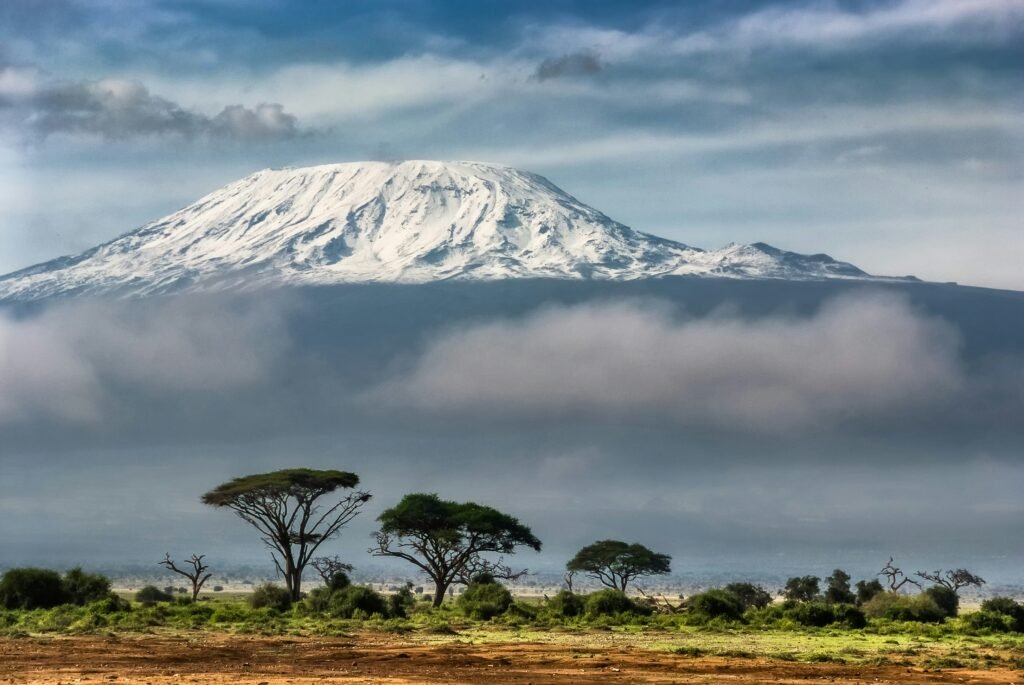
Mount Kilimanjaro is Africa’s tallest peak and one of the world’s highest freestanding mountains. Rising to 5,895 meters (19,341 feet) above sea level, its iconic snow-capped summit is an unforgettable sight. Although it is not a traditional “safari” destination with big game drives, Kilimanjaro offers a different kind of adventure: trekking through diverse climate zones to reach the summit.
Overview of Kilimanjaro
Kilimanjaro has five major ecosystems, including rainforest, heath, moorland, alpine desert, and an arctic summit zone. Each stage of the climb reveals a new environment and breathtaking views.
Altitude Considerations:
Trekkers are advised to acclimatize properly to increase the chances of a successful summit. Many routes include extra days on the mountain for this reason.
Popular Trekking Routes
Several routes lead up Kilimanjaro, varying in length, difficulty, and scenery:
- Marangu Route:
Known as the “Coca-Cola” route, this is the only one that uses dorm-style huts instead of camping. It is considered one of the easier routes but allows less time for acclimatization. - Machame Route:
Often called the “Whiskey” route, Machame is more challenging due to its steeper paths, but it offers scenic views and better acclimatization opportunities. - Lemosho Route:
Favored for its beauty and higher summit success rate, Lemosho starts on the western side of the mountain, passing through lush forests and moorland.
Combining Kilimanjaro with a Safari
Many visitors to Tanzania combine a Kilimanjaro climb with a wildlife safari. Climbing first allows your body to recover on a more relaxed safari afterward. Alternatively, you can do a safari first and schedule the climb last. The order often depends on individual fitness and personal preference.
Best Time to Climb
June to October and December to March are generally good seasons with more stable weather. However, varying weather patterns can still bring occasional rain or chilly nights, so it is wise to have appropriate gear.
Conclusion
A safari in Tanzania offers a unique blend of diverse landscapes, abundant wildlife, and vibrant cultures. From watching the Great Migration in the Serengeti to spotting tree-climbing lions in Lake Manyara and from exploring Ngorongoro Crater’s concentrated wildlife to unwinding on the pristine beaches of Zanzibar, the range of experiences is vast.
Travelers of all types can find something special here. Children can gain a better understanding of wildlife and the environment, while couples can enjoy romantic bush dinners and unforgettable hot-air balloon rides. For a more secluded experience, Ruaha National Park provides fewer crowds, rare species, and an immersive wilderness setting.
Selecting Tanzania as a safari destination also contributes to the support of local communities and conservation efforts. Tourism revenue helps sustain national parks, protect against poaching, and preserve cultural heritage. By carefully planning your trip—choosing the time of year that suits your interests, packing appropriately, and being aware of health and safety guidelines—you can create an unforgettable journey that matches your sense of adventure and comfort.
Each of the seven destinations discussed—Serengeti, Ngorongoro Crater, Tarangire, Lake Manyara, Ruaha, and Zanzibar—provides its own distinct flavor of Tanzania. Combining several of them in a single itinerary introduces you to Africa’s legendary wildlife, cultural immersion, and beautiful coastlines. You are bound to return home with photos of lion prides, elephants at waterholes, and turquoise beaches, along with the memories of interacting with Maasai communities or savoring fresh spices in Stone Town.
A Tanzanian safari can be a once-in-a-lifetime trip. With thoughtful research and planning, it can also be a deeply enriching experience that expands your appreciation for the natural world and the cultural diversity that makes Tanzania such a remarkable destination.

